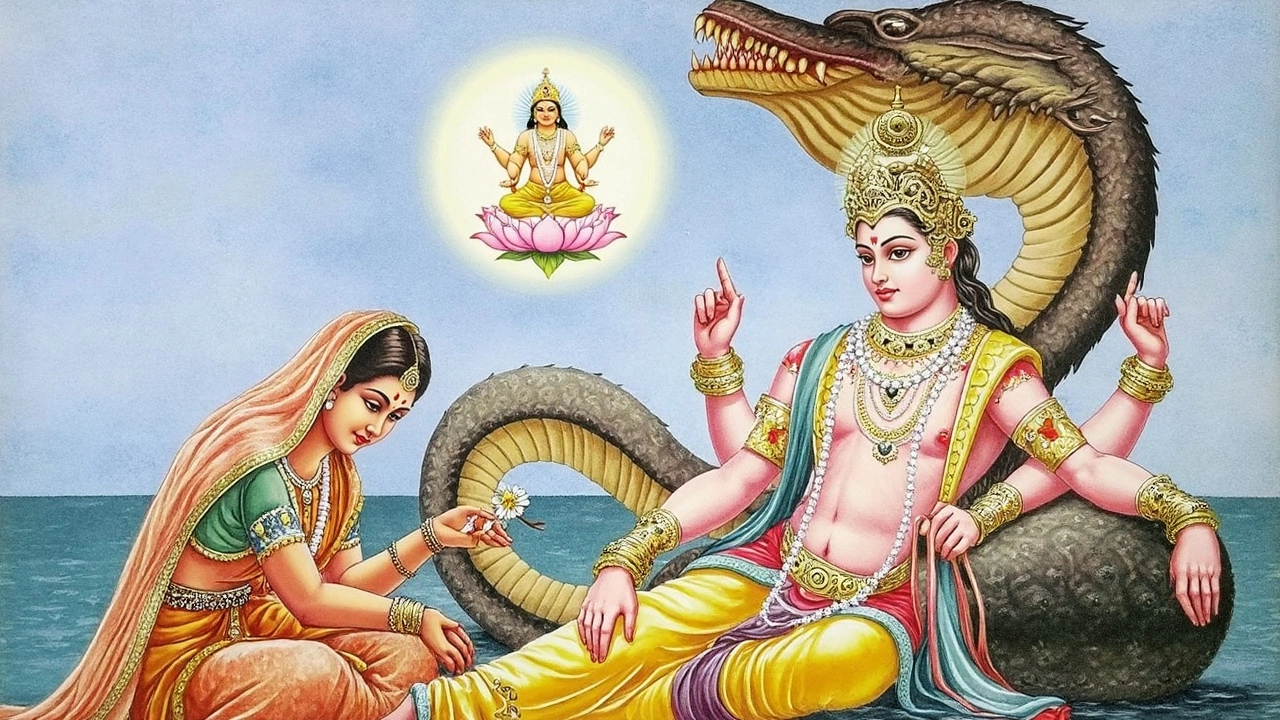Vishnu Mantra: Meaning, Benefits & How to Chant
If you’ve heard the name Vishnu mantra and wonder why it pops up in prayers, you’re not alone. People use it to bring calm, focus, and a sense of protection. In this guide we’ll break down what the mantra actually says, why chanting it helps, and how you can add it to your daily routine without any hassle.
What is the Vishnu mantra?
The most common Vishnu mantra is Om Namo Narayanaya. Translated word by word, it means “I bow to Narayana,” another name for Lord Vishnu. Narayana is seen as the preserver of the universe, the one who keeps everything balanced. When you repeat these five syllables, you’re essentially offering respect and asking for his steadying energy.
There are other versions, like the Om Vishnave Namah or the 108‑name chant, but the core idea stays the same – connecting to Vishnu’s protective vibe. The mantra is short, easy to remember, and can be whispered or spoken aloud, making it perfect for a quick mental reset.
How to chant the Vishnu mantra correctly
Start by finding a quiet spot where you won’t be interrupted. Sit cross‑legged or in a comfortable chair, keep your back straight, and take a deep breath. When you exhale, say the mantra slowly: “Om… Na‑mo Na‑ra‑ya‑na‑ya.” Try to feel each syllable rather than just saying the words.
Repeat the mantra 108 times if you can – that number is considered sacred in Hindu tradition. You don’t need a rosary; you can use a simple string of beads or just count on your fingers. If 108 feels too much, start with 21 repetitions and gradually increase.
Focus on the sound and let any thoughts drift away. The mantra works best when you’re present and not thinking about the next task. After you finish, sit quietly for a minute and notice any shift in your mood. Many people report feeling calmer, clearer, and a bit more confident.
Consistency matters more than length. Chanting for five minutes every morning or before bedtime can build a habit that steadies your mind throughout the day.
Want a quick boost during a stressful moment? Take a few deep breaths, whisper “Om Namo Narayanaya” three times, and let the vibration settle in. It’s a simple tool you can use anywhere – at work, on a commute, or while waiting in line.
Remember, the mantra isn’t a magic spell; it’s a practice that trains your brain to focus on positivity. Pair it with gratitude, a short meditation, or a simple prayer, and you’ll notice the benefits adding up over time.
So next time you’re looking for a calm center, try the Vishnu mantra. It’s short, easy, and backed by centuries of tradition. Give it a go and see how a few mindful breaths can change the rhythm of your day.

Nirjala Ekadashi 2025 falls on June 6–7, involving a challenging waterless fast. Those unable to observe the full vrat can find spiritual merit through mantra chanting, charity, or puja. Vaishnavs have separate timings, making the event significant for many seeking blessings and purification.
